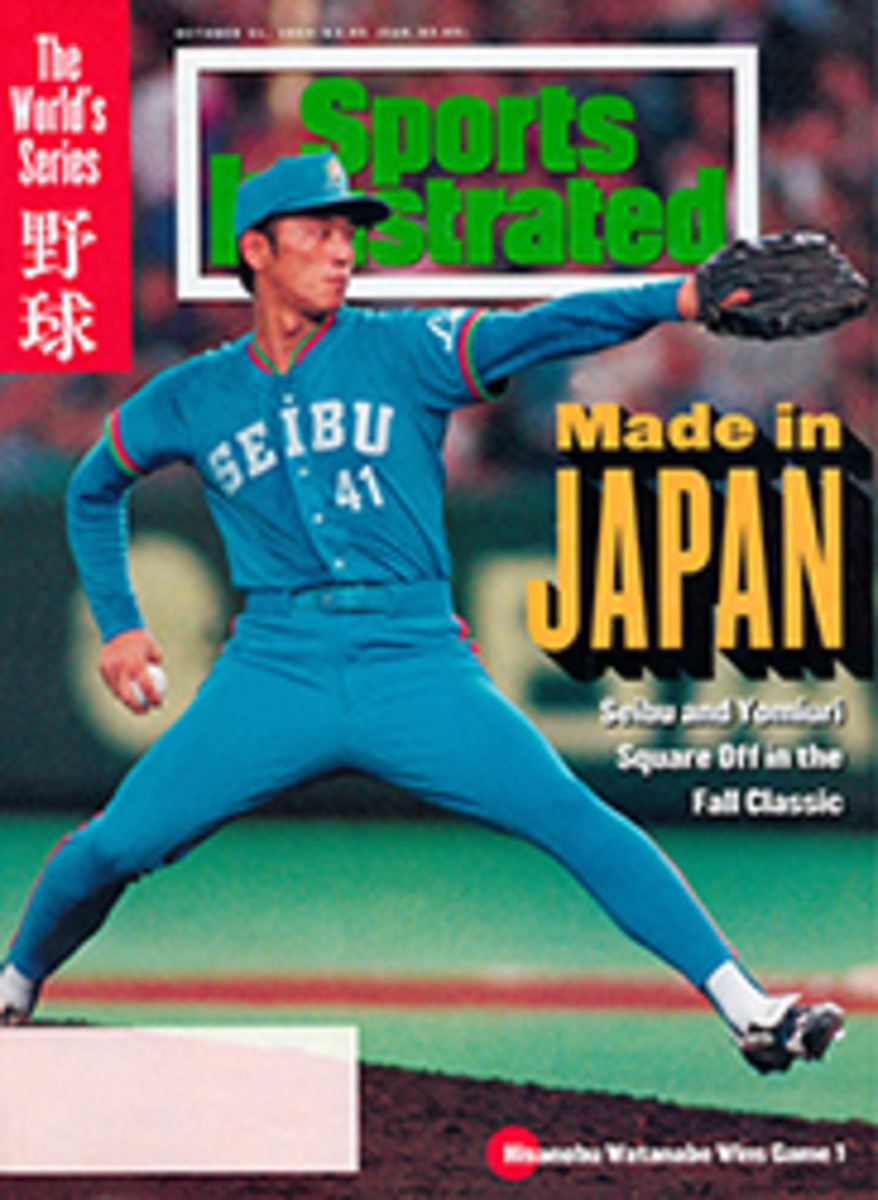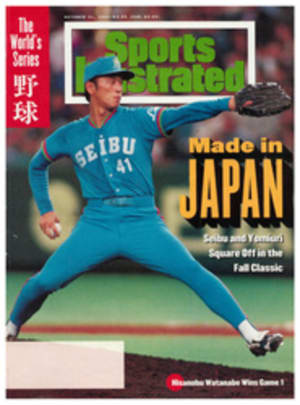
Now the Hard Part
Remember World Cup '94? Refreshing month of sports entertainment last summer in the U.S., TV soccer marathon, people in bars nattering about "flat back fours," wild-eyed Brazilian fans doing the samba.... You do? Of course you do. Now, remember what was supposed to come next? Pro soccer in the States. You know, Major League Soccer (MLS), the outdoor first division due to kick off in April 1995, the so-called legacy of the Cup, the pro game of the '00s. What? Vaguely heard of MLS? Thought they'd already punted on the idea?
Two weeks ago, the closest thing this nation has to a first division—the seven-team American Professional Soccer League (APSL)—held its fifth championship. In Canada. The hometown Montreal Impact beat the Colorado Foxes 1-0 at Claude-Robillard Stadium. Although the overflow crowd of 8,169 poured onto the pitch to celebrate the victory, the match was a far cri from what FIFA, the sport's governing body, had in mind when it awarded the World Cup to the U.S. and mandated the start of a topflight league.
In the U.S. the title game was televised only on regional cable stations. The spectators at the game were mostly Quebecois. And none of the 24 men who played was good enough to have suited up for the World Cup. Jean Harbor, a longtime APSL standout and the championship game's lone goal scorer, said, "People might look at this and say, 'This is a league?' But come here and try to play."
Meanwhile, 2,400 miles away in California, Alan Rothenberg was nursing along his brainchild, MLS. Remember Rothenberg? Razor-sharp Los Angeles attorney, head honcho of World Cup '94, photo-op junkie and president of the United States Soccer Federation (USSF)? Having made exceedingly good on his pre-Cup pledges—packed and secure stadiums, hefty Nielsen ratings and a U.S. team that would exceed expectations—Rothenberg now hopes to fulfill the pro soccer promise that the Cup created.
But this mission is no gimme penalty kick. The North American Soccer League (NASL), which started in 1967 and was successful through the mid-'70s, went bust in '84: the Major Indoor Soccer League folded in 1992, after 14 years of operation; and various smaller leagues have been forced to merge, only to face continued obscurity. The APSL was the product of one such merger, in 1990.
Still. Rothenberg vowed in July that MLS would be like "a speeding train over the next few months." Instead it has been more like a rickety pushcart. As of this fall the MLS express was supposed to have a total of $50 million to $100 million from numerous investors, 12 national sponsors and 12 league cities, with each franchise having sold 10,000 season-ticket subscriptions. But MLS has only one investor (New York investment manager Paul Tierney), at only $5 million: one shared sponsorship (comprising Nike, Reebok, Adidas, Apex One and Mitre); and six sites (Boston: Columbus, Ohio; Los Angeles; northern New Jersey; San Jose; and Washington. D.C.), only two of which (Columbus and New Jersey) have met the season-ticket target. The league's one unimpeachable accomplishment through last week was signing a TV deal under which ESPN2 will air 25 games, ESPN 10 games and ABC the championship.
Why so many slips twixt the Cup and MLS? Rothenberg says the slowdown comes from a combination of post-World Cup burnout and the "somewhat circular process" that develops when investors, sponsors, cities and players hold back until the others commit. Though the normally indefatigable Rothenberg, 55, seems worn down by that process, he believes that by mid-November he can cobble together the deals and the $50 million needed for an April start-up. "If anybody wants to take this off my hands, godspeed," he says. "[But] if everyone who says he's in stays in. we'll be there. I'd love to have it for '95, but if that means doing it wrong, I'd rather wait for '96 or '97. We'll find out in the next several weeks."
This sort of brinkmanship isn't new to Rothenberg, whose business tenacity during the World Cup earned him the nickname Rothenweiler. In August he won a second four-year term as USSF president but took some hard shots in the process. Richard Groff, then USSF treasurer and now APSL commissioner, charged Rothenberg with a conflict of interest, saying that the USSF had given Division I status and a $5 million line of credit to the proposed MLS rather than to the other bidders (including the APSL) because Rothenberg had created the new league.
Rothenberg denies the charge, saying he recused himself from all MLS affairs at the USSF. He calls his multiple roles a "confluence of interest" and is miffed by the criticism. "I was all set, if I got defeated, to say, 'Just remember, the British didn't reelect Churchill after World War II, either,' " Rothenberg says. While supporters place him on a par with David Stern of the NBA, and everyone acknowledges Rothenberg's clout with corporations, marketers and FIFA, detractors say he is arrogant and self-aggrandizing. (They point to the $7 million bonus he accepted last week from the World Cup USA '94 board of directors for doing a job he had declined to take a salary for when he took office back in '90.) The ego that drives him, however, may well pull pro soccer in its wake. "MLS will succeed," says a World Cup "94 executive, "because Alan has to succeed."
Rothenberg has structured MLS as a single entity that will own the players and the franchises and will control costs and revenues. There will, however, be several operator-investors, each of whom can, for $5 million, take charge of his city's team, overseeing both its front-office personnel and its marketing. While the single-entity approach may seem antithetical to American free enterprise, it does have certain advantages.
•All teams will have equal access to a player pool to be divvied up in a draft.
•No owner with deep pockets can disrupt the competitive balance or the payroll structure, which contributed to the NASL's downfall.
•Neither sponsors nor TV networks need fear being "ambushed" by local companies or affiliates.
•Should the waters get choppy, everyone will be in the same boat.
To make sure teams play hard and market aggressively, MLS has a bonus structure that takes into account won-lost records and attendance. If the league succeeds, those who have invested directly or have been operator-investors will make a profit, and the franchises run solely by MLS can be sold on the open market for far more than the $5 million initial pay-in. Rothenberg's crucial task now is to reel in the big-money people—the right ones. "We want people with an understandable business purpose in this," he says, "not people who see this as a rich man's toy."
Among those interested are some NFL owners whose stadiums are seldom used from April to October. Lamar Hunt, owner of the Kansas City Chiefs, is rumored to be an MLS investor. "I think there is a potential there and would like to see it happen," Hunt says. Should the league announce its financial backers, the dozen national sponsors who are being asked to pony up $1.5 million are likely to follow. "The sponsors are waiting for something tangible—the name of a player or a team, or who the ownership groups are," says Peter Moore, vice president of global product marketing for Reebok. "If the dominoes do fall, we'll see the likes of McDonald's and Budweiser."
MLS has budgeted the bulk of its funds for its most important item: the players. With an average salary of $70,000 and with more than $20 million set aside for transfer fees from foreign teams, MLS hopes to sign many members of the "94 U.S. national team; a corps of unheralded (and underpriced) attacking players from around the world; and a sprinkling of stars such as goalkeeper Jorge Campos of Mexico and midfielder Carlos Valderrama of Colombia.
MLS has two advantages besides money to offer players. One is the prospect of endorsement contracts in the burgeoning U.S. soccer market; the apparel sponsors have already committed to a four-year, eight-figure deal. The other is being able to place players where they want to be, which is especially attractive to U.S. team veterans abroad such as Tab Ramos and John Harkes, who are eager to return home, settle down and raise families.
Until Rothenberg's dominoes do fall, the APSL—deemed the second division by the USSF—will remain the only outdoor game in town. According to Groff, who became APSL commissioner on Sept. 8, more than half of the players in the APSL are under multiyear contracts and will not be available to MLS. "Our goal is to be a Division I league," Groff says. But that notion seems quixotic. With salaries that begin at $15,000 and top out at about $50,000, the APSL doesn't offer enough dough to attract the talent from around the world that would give it clout. Nor does it have any national U.S. sponsorship or broad TV exposure.
All APSL owners have is the hope that MLS never gets rolling. They recently turned down an offer from Rothenberg to buy into MLS, saying the single-entity system would subvert competition and entrepreneurship. But given the ground-swell of interest created by the World Cup, Rothenberg's doggedness and the involvement of Reebok, Nike, etc., it seems likely MLS will launch come April. "First-division soccer here is as inevitable as tomorrow," Rothenberg says. "I just don't know if it's that imminent."
PHOTO
BILLY STRICKLAND/ALLSPORT USA
Rothenberg (inset) dreams of topflight U.S. teams featuring internationals like Campos (left) and local talent too.
PHOTO
SIMON BRUTY/ALLSPORT USA (INSET)
[See caption above.]
PHOTO
GEORGE TIEDEMANN
The APSL title was no World Cup, but Impact fans and player Jason Devos (in white) still rejoiced.

